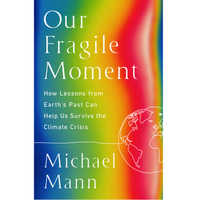'They seemed primed to take over': How the Great Dying doomed the 'beast tooth' and set the stage for the dawn of the dinosaurs
"Much as we can only wonder today what knowledge was lost in the ransacking of the Library of Alexandria, we can also ponder what sort of magnificent creatures born of the Cambrian explosion were lost."
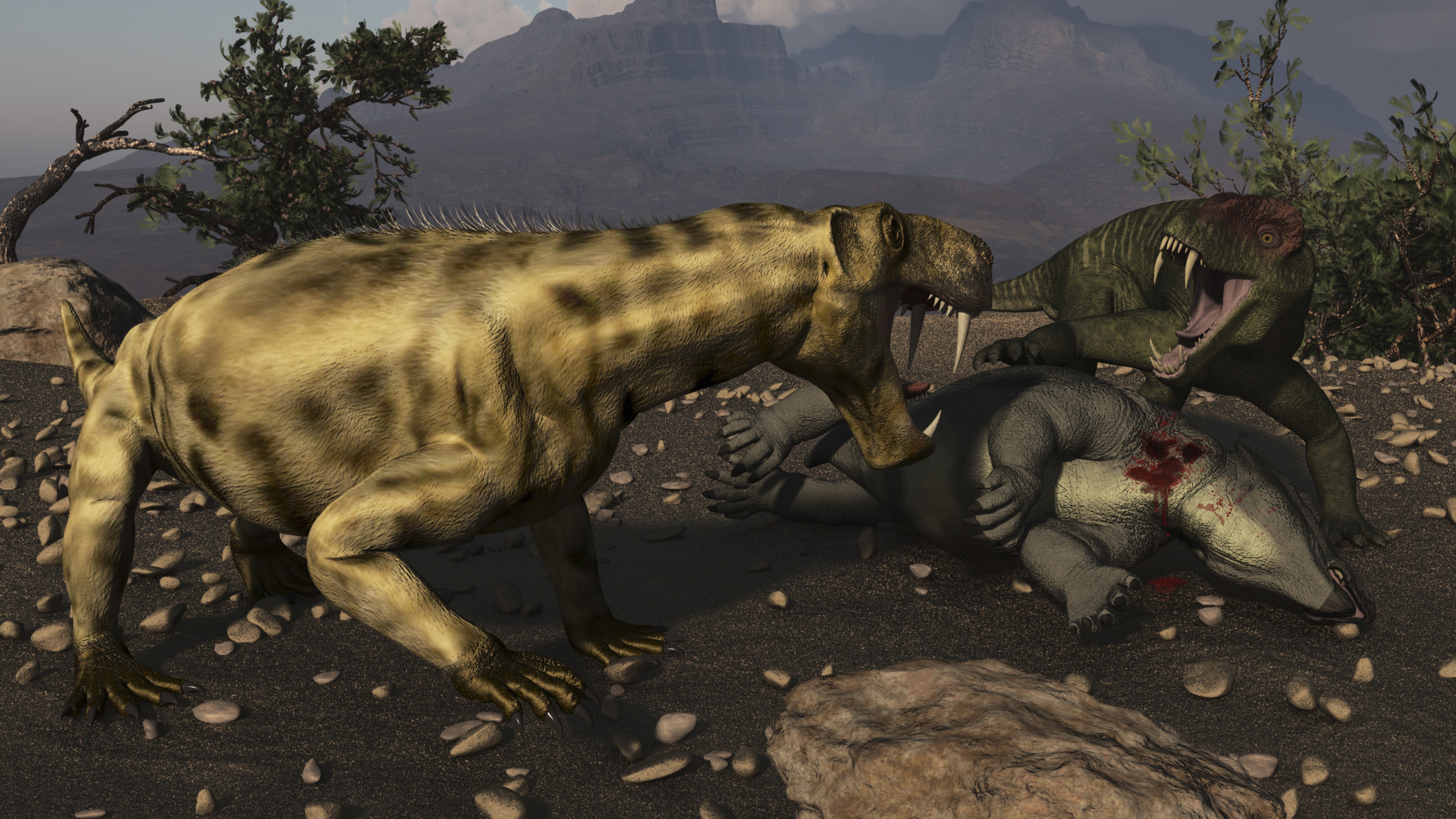
The excerpt below is taken from "Our Fragile Moment: How Lessons from Earth's Past Can Help Us Survive the Climate Crisis" (Hachette Book Group, 2023), by Michael Mann. It looks at how climate change following the Cambrian explosion caused the biggest mass extinction on Earth — dooming the creatures set to dominate and set the stage for dinosaurs to rule.
The mechanisms that can freeze the planet, as was the case with Snowball Earth can also lead to inhospitably hot climates, when enough carbon dioxide enters the atmosphere. Arguably the greatest extinction event of all time — called the Great Dying — appears to have resulted, at least in part, from a massive heat-inducing release of carbon into the atmosphere 250 million years ago.
Is this ancient event a possible analog for a sixth, human-caused, climate-change-driven mass extinction today? In answering this question, we will at times work our way through some details of the science, but the payoff is that we will see not just that scientists are able to unravel such mysteries, but how they do it.
In the late Proterozoic eon, around 550 million years ago, Earth had thawed out from a series of major glaciations, perhaps even global snowball conditions. The end of the Proterozoic marked the beginning of a brand new era — the Paleozoic, which extended from around 540 million to 251 million years ago.
The first period of the Paleozoic — the Cambrian — saw a remarkable explosion in the diversity of life, known, appropriately, as the Cambrian explosion. Most of the life that exists today emerged during the first 10 million years of that period, including the first complex multicellular life and familiar groups such as mollusks and crustaceans.
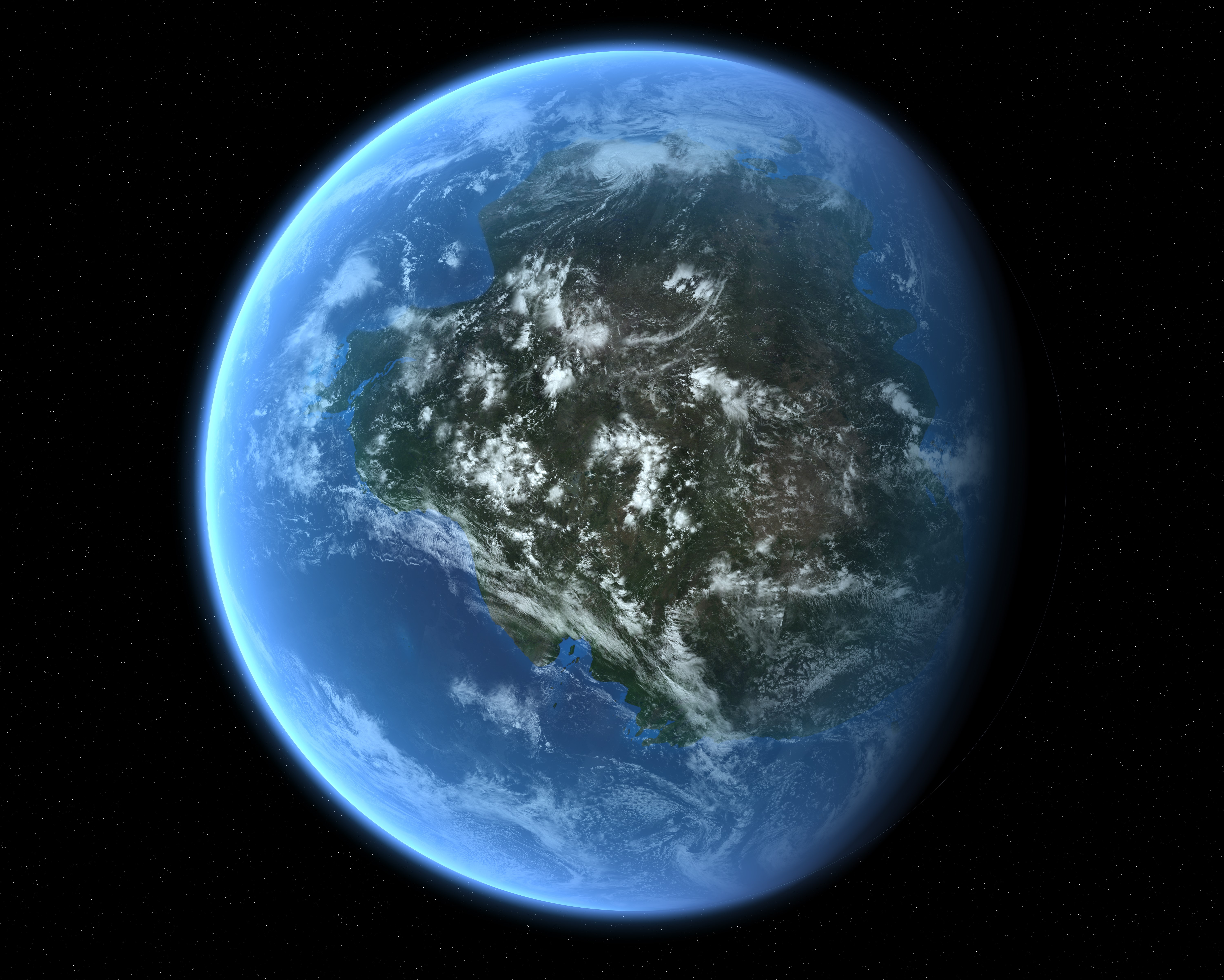
Among the reasons for this remarkable diversification was a sustained rise in oxygen from photosynthetic life. Higher levels of oxygen allowed for more diverse, multicellular organisms because they require oxygen in high enough concentrations that it can reach interior cells. The stratospheric ozone layer, which had developed during the Neoproterozoic era (1 billion to 538 million years ago), protected animals from the sun's damaging ultraviolet rays and helped populate the land. Some researchers even argue for a possible "bottleneck" effect, where the few life-forms that survived the Neoproterozoic ice ages (Snowball Earth or not) were able to rapidly fill emerging niches as Earth thawed.
Sign up for the Live Science daily newsletter now
Get the world’s most fascinating discoveries delivered straight to your inbox.
A major glacial event occurred at the end of the following period of the Paleozoic, the Ordovician, around 450 million years ago, as chemical weathering outpaced the volcanic emissions of gas and atmospheric CO2 levels dropped. The resulting cooling caused a buildup in ice mass on the large South Pole–centered supercontinent of Gondwana. Sea levels dropped. Much of the coastal habitat that had been home to primitive mollusks and crustaceans disappeared. Some of the creatures scraped by, but about half of all existing genuses perished. Much as we can only wonder today what knowledge was lost in the ransacking of the Library of Alexandria, we can also ponder what sort of magnificent creatures born of the Cambrian explosion were lost. Welcome to the first of the widely recognized global mass extinction events. It will hardly be the last we encounter.
The most well-known extinction event ended the reign of the dinosaurs roughly 66 million years ago. But the deadliest extinction event took place at the end of the Permian period, roughly 250 million years ago. It is referred to in the scientific community as the Permian-Triassic (or P-T for short) extinction, but because an estimated 90% of all Permian species disappeared from the face of the planet, it has earned a nickname: the Great Dying. Marine organisms were hit especially hard, with 96% of species perishing. Gone were the trilobites so familiar to amateur fossil collectors everywhere — primitive arthropods that were the distant ancestors of the modern horseshoe crab. Having survived the earlier Ordovician extinction event, their own nearly 300-million-year moment had come to an end.
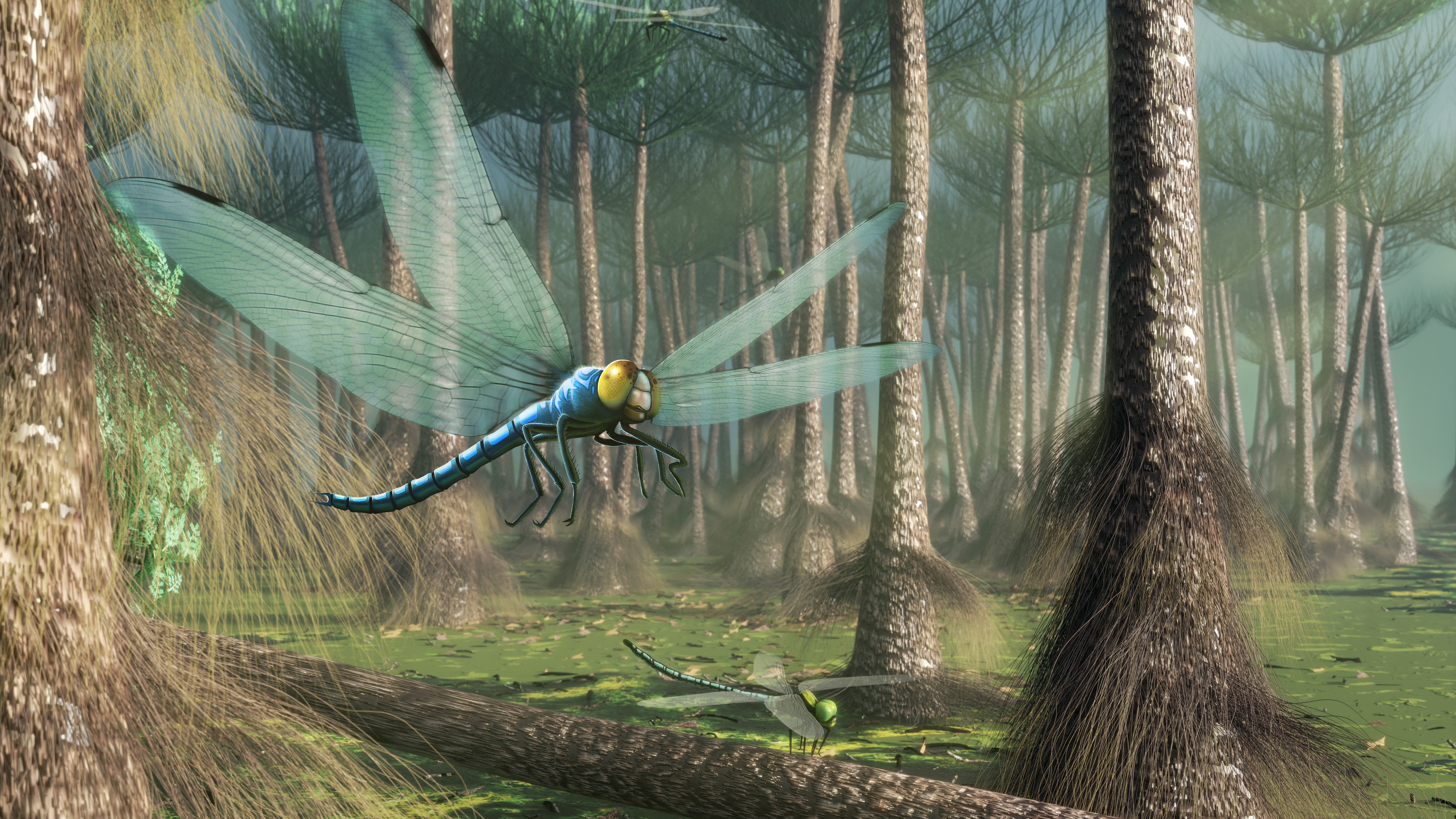
Not only were the vast majority of marine invertebrates gone, but so were the earliest fish species. On land, more than two thirds of amphibian and reptile species and nearly one third of insect species were wiped out. Another iconic species, a giant dragonfly called Meganeuropsis with a nearly three-foot (0.9 meter) wingspan that is often included in artist depictions of the Carboniferous period — and to this day still haunts my nightmares — was now gone.
The P-T extinction event wiped out many of the groups that had dominated life on land, freeing up ecological niches to be filled by new organisms, including reptiles such as crocodiles and the earliest dinosaurs. Once again, there were both winners and losers. Who won and who lost, in this case, came down to geology and geochemical weathering cycles.
Dinosaurs, it turns out, were direct beneficiaries of the P-T extinction event.
Midway through the Paleozoic, around 420 million years ago, we saw the emergence of plants with roots, stems, and leaves, which as we now know helped accelerate chemical weathering by producing acids that dissolve rock, helping cycle water from the soil back into the atmosphere. This may have led to a slow, steady decrease in atmospheric CO2 levels through the late Paleozoic. The spread of these vascular plants, however, also led to a new source of organic matter that could be buried on land or carried off in rivers for ocean burial. Increased burial of organic matter causes rising atmospheric oxygen levels because that organic matter is the product of photosynthesis, which splits up oxygen and carbon atoms. The carbon, once buried, is no longer available to cannibalize the liberated oxygen. In the Paleozoic, oxygen concentrations climbed as high as 35% (almost twice the current concentration of 21%).
Those high oxygen levels favored synapsids, creatures with a high metabolism, featuring a single hole in each side of their skull that led to improved jaw function. They were part of a diverse group of four-legged terrestrial animals, including carnivores, insectivores, and herbivores, that first arose in the late Carboniferous and would evolve into the group we today know as mammals.
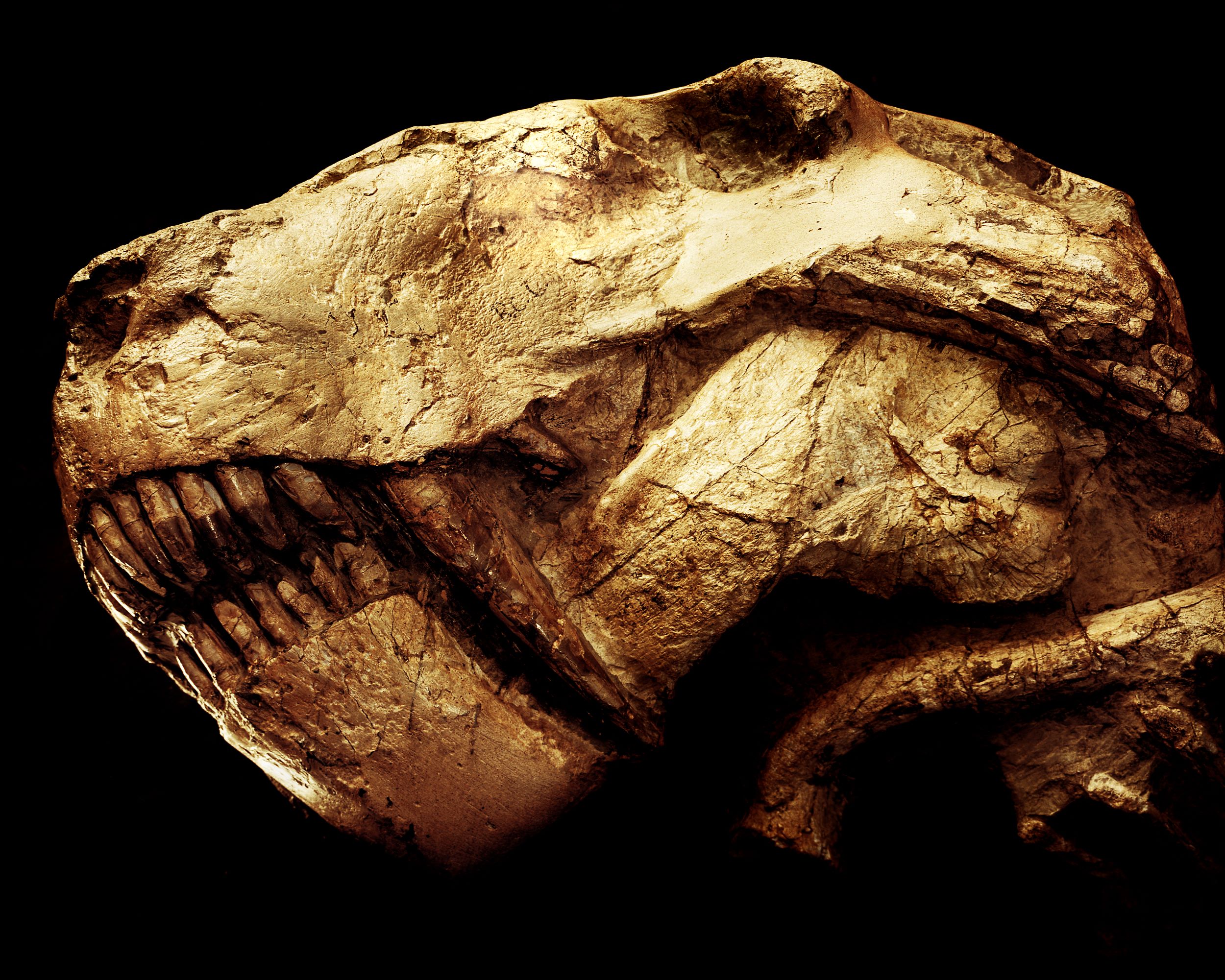
By the early Permian, they were the dominant terrestrial species. By the mid-Permian, another group of proto-mammals — the possibly warm-blooded, somewhat rodent-like therapsids — emerged and became the new dominant species. By the late Permian, they may have even developed fur. One group, known as Theriodontia (Latin for "beast tooth"), displayed a number of evolutionary innovations: A shift in the bones supporting the jaw allowed the jaw to open wider, and may have aided hearing as well. The skull and teeth became larger, the teeth more specialized, and the jaw more powerful. They seemed primed to take over. But it was not to be.
Everything changed at the Permian-Triassic boundary. Levels of CO2 spiked. That led to massive warming. Plate tectonics by now had brought all the continents together into a single giant continent — Pangea — straddled across the equator. It was already difficult for maritime moisture to penetrate deep into the center of the continent. Rapid greenhouse warming made it even hotter and drier, according both to climate model simulations of the end of the Permian and analyses of the fossil river deposits from Pangean floodplains. The sudden drying would have led to the massive die-off of the tenuous, moisture-dependent forests that had arisen over the course of the Paleozoic. That meant less burial of organic matter on land, assisted perhaps by decreased carbon export to the deep oceans due to a collapsing marine food web. Atmospheric oxygen levels appear to have dropped precipitously as a result, reaching concentrations as low as 15% at the P-T boundary.
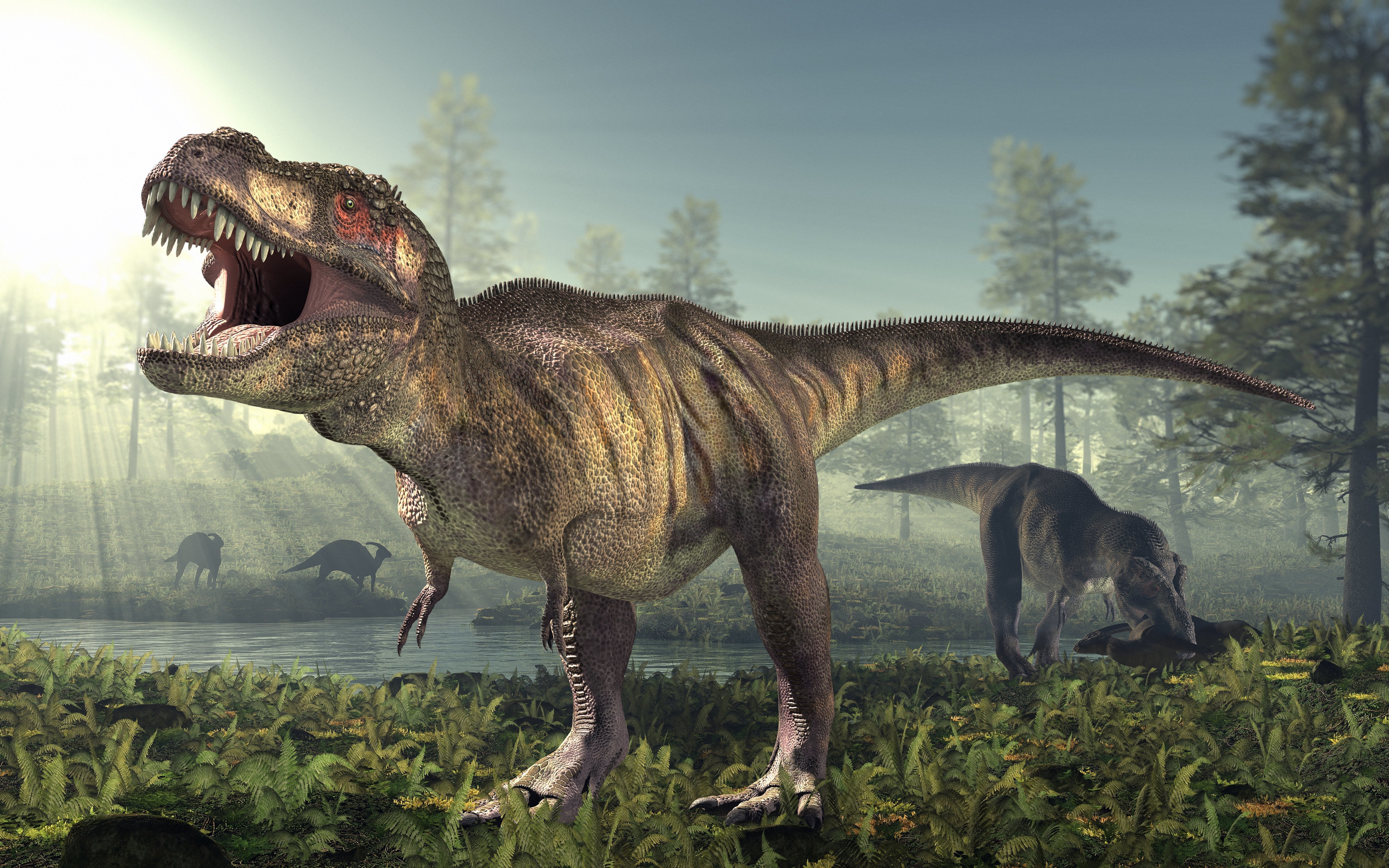
The drop in oxygen was a further contributor to the mass die-off. The combination of greenhouse warming and low oxygen would have led to widespread hypoxia — a state where organisms simply cannot take in enough oxygen to support metabolism. That's where the dinosaurs come in. The proto-mammals that had come to dominance during the Permian — the synapsids and therapsids — had thrived off high oxygen levels. But as oxygen concentrations dropped, they were now poorly suited to their environment.
Enter the diapsids, a wide-ranging group of tetrapod vertebrates that first emerged during the Carboniferous around 300 million years ago. They include the reptiles, birds, and now-extinct dinosaurs. What distinguished them from their relatives, the synapsids and therapsids, was the presence of two holes (instead of one) on each side of their skull. One subgroup of synapsids, known as archosaurs — which includes crocodilians and the earliest dinosaurs — exploited that innovation to develop a more efficient respiratory system that could make more effective use of the available oxygen. That gave them a leg up on the competition when oxygen levels plummeted at the P-T boundary. Dinosaurs, it turns out, were direct beneficiaries of the P-T extinction event.
Only a handful of proto-mammals survived. One group that did was known as Cynodontia ("dog teeth"). They were our ancestors, and the ancestors of all mammals. At first, they probably looked somewhat like a huge, scaly rat, growing to as much as six feet (1.8 m) in length. Truly a Rodent of Unusual Size if ever there was one. But by the end of the Triassic, they had shrunk to the size of modern-day field mice, hiding behind rocks from their reptilian predators.
Excerpted from "Our Fragile Moment: How Lessons from Earth's Past Can Help Us Survive the Climate Crisis" by Michael E. Mann. Copyright © 2023. Available from PublicAffairs, an imprint of Hachette Book Group, Inc.
Our Fragile Moment: How Lessons from Earth's Past Can Help Us Survive the Climate Crisis - $21.66 from Amazon
In this sweeping work of science and history, the renowned climate scientist and author of The New Climate War shows us the conditions on Earth that allowed humans not only to exist but thrive, and how they are imperiled if we veer off course.

Michael E. Mann is presidential distinguished professor and director of the Center for Science, Sustainability and the Media at the University of Pennsylvania. He is author of the new book "Our Fragile Moment: How Lessons from Earth's Past Can Help Us Survive the Climate Crisis." (PublicAffairs, 2023) and "The New Climate War: The Fight to Take Back Our Planet" (PublicAffairs, 2021).
